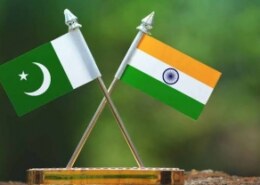what do you mean by capitalism and what do u mean by socialism? Which countries follow socialism and why?
The China-Pakistan Economic Corridor (CPEC) is a part of China's ambitious 'One Belt One Road' initiative that aims to connect China with Europe through a vast network of roads and development projects like railways, dams and pipelines. The corridor ia a staggering 46 billion dollar project which wRead more
The China-Pakistan Economic Corridor (CPEC) is a part of China’s ambitious ‘One Belt One Road’ initiative that aims to connect China with Europe through a vast network of roads and development projects like railways, dams and pipelines. The corridor ia a staggering 46 billion dollar project which will connect Kashgar in Xinjiang province of China, with Gwadar port in Baluchistan which is the largest province in Pakistan.
Implications for India’s Strategic Interests :-
1. Threat to Sovereignty – The planned corridor will pass through the disputed region of Gilgit-Baltistan in the POK region, which India claims to be it’s integral and indepensable territory. The corridor will illegally legitimise Pakistan’s ownership over the region.
2.Geostrategic Implications – CPEC will provide China access to the Arabian Sea and the Indian Ocean through the Gwadar Port enhancing China’s naval presence in the area, strategically targetting Indian’s dominance in the region.
3. Geopolitical Tensions – With the ongoing Pakistan-Afghanistan tensions coupled growing China-Russia-Pakistan Axis acting as a strategic competitor to the United States, the CPEC would exaberate regional instability.
4. Economic Consequences – The Gwadar port will provide China with the shortest route to the oil-rich Middle East. This would not only save millions for China but could potentially divert opportunities from India.
Proposed Measured to Safeguard Indian Interests:-
1. Countering China’s Dominance – India’s investment in the Chahbahar Port, which lies close to Gwadar will directly challenge China’s growing presence in the region.
2. Indian Infrastructure Projects – The “Indian Middle East Corridor” signed during the G-20 summit is a promising counter to CPEC. Other Indian development projects such as India-Afghanistan Friendship Dam and the Bangladesh-India-Myanmar-Thailand Highway in disputed areas can enhance India’s strategic positioning.
3. Diplomatic Outreach – India could leverage its stance by strengthening diplomatic ties with neighbouring countries and targetting China-Pakistan Axis through its alliances in forums like QUAD and IPEC.
Even though the CPEC promises to bring economic opportunities for the South Asian Region, India must adeptly navigate its diplomatic stance to counter the growing Chinese hegemony within the region, in order it protect its sovereignty and regional stability.
See less

Capitalism and socialism are contrasting economic systems with different approaches to ownership, production, and distribution of goods and services. Capitalism is characterized by private ownership of property and means of production. In this system, individuals and businesses operate in a free marRead more
Capitalism and socialism are contrasting economic systems with different approaches to ownership, production, and distribution of goods and services.
Capitalism is characterized by private ownership of property and means of production. In this system, individuals and businesses operate in a free market, driven by supply and demand. Key features include:
1.Profit motivation
2.Competition between businesses
3.Limited government intervention
4.Individual economic freedom
Socialism, conversely, advocates for collective or state ownership of resources and means of production. Its main characteristics include:
1.Public ownership of key industries.
2.Central economic planning.
3.Emphasis on equality and wealth redistribution.
4.Greater government involvement in the economy.
Proponents of capitalism argue it fosters innovation, efficiency, and economic growth.
Supporters of socialism believe it promotes fairness and meets everyone’s basic needs. Detractors argue it stifles innovation and individual liberty.
In practice, most modern economies are mixed systems, incorporating elements of both capitalism and socialism. The balance between these elements varies widely among different countries, reflecting their unique historical, cultural, and political contexts.
examples of countries with strong capitalist elements United States, Singapore, Hong Kong, Switzerland. Whereas Countries with stronger socialist elements include Cuba,Vietnam, China, North Korea.
See less